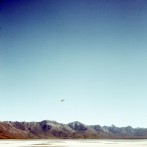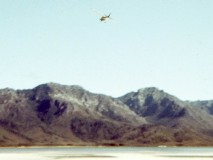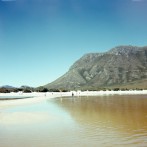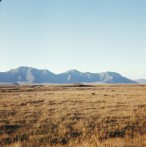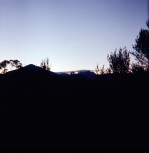
This page commenced Monday, 30th October 2006
On radio and TV today came the news that Sir Nicholas Stern, former World
Bank Chief Economist, has stated in a document entitled the "Stern Review"
that global warming/climate change may well cost the world
NINE TRILLION DOLLARS.
Well, if you've read other pages in this website, I'm sure you can imagine
what my first reaction was to this revelation: that of a bull to whom had
just been exhibited the proverbial red rag.
Not, as some may think, because of the prodigious amount of money
involved. Not because it's approximately the combined cost of the two World
Wars. Not because its effect may be greater than that of the great
depression of the 1930's. Not even because it represents about a fifth of
the total wealth in the world.
No: simply because it is so typical of the early 21st Century
world in which we find ourselves that some financial big-wig presumes to
reduce the fact that our planet is in dire peril - with life as we know it
at severe risk - to dollar terms, as if that will do any good at all.
However, after a while, when I had calmed down a bit, I thought: "Hang on a
minute - in a world run by people who do think like that, if one of
their own expresses the problem in language that even they can understand,
perhaps the money-grubbers might finally begin to understand that this
really is no laughing matter...?"
Well, we can only hope. So, lucky you: you've been spared another of my
rants. Instead, what you'll find here is basically an account of my own
coming to awareness of the world's condition over some 36 years.
However, just before getting off the subject of money, I can't resist a
passing shot:
"Nine trillion" is 9 followed by twelve zeros. You can think of it as "nine
thousand billion" or "nine million million".
$9,000,000,000,000
In a world which has become accustomed to prefixes like "giga-" and "tera-"
with reference to computer memory, we can express this obscene amount of
money as "nine teradollars". [According to the Concise Oxford Dictionary,
eighth edition (1990), the prefix "tera-" comes from the Greek word "teras",
meaning "monster".]
Perhaps now would be a really good time to declare a "war on tera"...
This page finally uploaded on Saturday, 11th November 2006
REMEMBRANCE DAY
I may be getting on a bit, but my memory (long-term, at least) isn't too
bad at all. I remember a lot of "milestones". So now, join me on a trip
down "Memory Lane"...
In 1970 - my second year at matric. college - somehow a copy of a
publication came into my possession. It was a crudely-produced booklet
consisting of ten quarto sheets, stapled together. It was packed with
typewritten articles and poems, along with several bleak monochrome cartoons
(its front cover, above, is a typical example). It was produced by the
"Axis" newspaper committee at my old high school; quite clearly, a
lot of thought and effort had been put into it, making good use of
the comparitively primitive resources available at the time.
Amazingly, I still have the old thing over a third of a century later! (It
shares a shelf with my various school, college, and university year-books.)
Quite clearly, it was produced in the wake of the first "Earth Day" in the
United States, which occurred on 22nd April, 1970.
The following links together provide a good background of this event:
http://en.wikipedia.org/wiki/Earth_Day
http://usinfo.state.gov/gi/Archive/2005/Apr/11-390328.html
http://www.earthday.net/news/Hayes_election.aspx
http://www.time.com/time/archive/collections/0,21428,c_earth_day,00.shtml
I remember reading it with a vague sense of unease. The term "pollution" was
already current at the time as a buzz-word
(Tom Lehrer's song
about pollution had been recorded in 1965); but this all seemed a bit "over
the top".
However, over the next year or so, it became clear that "the environment"
was becoming a serious issue.
Seven years earlier, in 1963, the Tasmanian State Government applied for -
and was given - a Commonwealth grant (i.e. from the Australian Federal
Government) of $5 million, to build a 55-mile (about 88-km) road into
south-west Tasmania, in order to survey the area for possible hydro-electric
development.
Tasmania has a history of hydro-electric power going back to the late 19th
Century. Click
here
to visit my "Power to the People" page; this is largely concerned with
Launceston's old Duck Reach power station which commenced operations in
1895.
South-west Tasmania was known as a rugged area, much beloved of bushwalkers,
with mountains and wild rivers - and a small, exquiste lake named Lake
Pedder. This lake was roughly square in shape, with its eastern and western
shores each about 3km in length, and its northern and southern shores each
slightly longer.
Lake Pedder was remarkable in many ways. It was surrounded by mountains,
giving it an incredibly isolated, peaceful ambience. The water was often so
still that the reflection of those mountains in the lake was just about
perfect.
But the most remarkable feature was surely the white quartz sand (with a
tinge of pink) which surrounded the lake, extending along the eastern shore
into a magnificent wide beach. The lake was an inland sea in miniature - an
absolute treasure.
To see some photographs of the lake, visit the following web-pages:
http://www.lakepedder.org/images/index.html
http://users.bigpond.net.au/dveltkamp/LakePedder/index.htm
http://www.rankin.com.au/essay7.htm
http://tasmaniantimes.com/index.php/weblog/comments/1830/
As mentioned above, in 1963 the south-west was under investigation for
possible hydro-electric development. In 1967, the go-ahead was given. Please
visit the following web-pages to read more:
http://www.naa.gov.au/Education/challenge/2002_winner.html
http://en.wikipedia.org/wiki/Lake_Pedder
http://www.abc.net.au/tv/rewind/txt/s1173814.htm
My chance to visit the lake came in the Easter break of 1972. With the
dammed water already rising toward the lake, there wasn't going to much more
of a chance to see it if one didn't act fast. So I went with a party of
church people and members of a Christian student fellowship with which I was
involved at the time.
Early in the morning, a convoy of cars set out for Scotts Peak, where one of
the dams was being built. This was the standard port-of-call for people
wanting to make the trek into the wilderness and visit the lake - a hike of
about 7 miles (11km) westwards along a track over the button-grass plain.
I had my little
Brownie Starlet
camera with me, and took a total of fifteen photographs during that long
day. Some were of my fellow-travellers, rather than of the landscape
per se; however, I took enough "scenery" pictures to warrant
including those here.
In those days, it was fashionable to take slides; so that's what I did.
Slides taken with a camera of this type looked like this:
Compared to most slides, the film area is big - 3.8cm square, within
the standard 5cm square frame. (The 9V battery is just there for size
comparison.)
The slides shown above are some of my Lake Pedder shots. In August-September
2006, I took my Pedder slides (along with a few others which also mean a lot
to me) to a local photographic shop and asked if they could be copied onto
CD. One young gentleman named Luke who works there took an interest in the
project, and produced a magnificent set of JPEG's from my old slides. Some
of the slides were a bit the worse for wear, and Luke did an excellent job
of restoring the quality of the pictures. Luke, if you're reading this:
Thanks, mate - you're a genius!
Following are reduced versions of those restored Lake Pedder pictures which
basically feature scenery. (I've deliberately chosen not to include pictures
in which individual people can be readily identified, for privacy reasons.)
Because of the shape of the pictures - i.e. more-or-less square, as opposed
to rectangular, as is more usual - I've decided to make them available in
two sizes: 640 pixels wide, and 480 pixels high. You can click on the links
to see these bigger versions.
The track from Scotts Peak approached the lake from the south-east; and
indeed one's first view of the lake was from its south-east corner, at the
southern end of that magnificent wide beach.
One of the first things to notice was the way low clouds draped themselves
over the tops of some of the mountains, against the backdrop of an otherwise
cloudless sky - a bit spooky, but very beautiful.
Our little party had a well-earned rest and a bite to eat. (The clean water
from the lake was perfectly acceptable for preparing hot drinks.)
Having recuperated a bit, some of us went for a walk along the beach toward
the lake's north-east corner.
Somebody had set up camp at the northern end of the beach; there was even a
light plane parked nearby.
The brown vertical object (at the centre of the right-hand picture above)
was a monument to Truganini, a woman claimed to be the last full-blood
Tasmanian Aborigine. This was erected by the Lake Pedder Action Committee.
It consisted of a bust of Truganini on a pedestal, on which were inscribed
the following words:
Truganini 1803-1876
To read more about Truganini, and thus appreciate her importance in the
history of Tasmania, visit these web-pages:
http://en.wikipedia.org/wiki/Truganini
http://www.islandmag.com/96/article.html
http://www.smh.com.au/news/Tasmania/Bruny-Island/2005/02/17/1108500205672.html
If you've had a look at some of the panoramic photos of Lake Pedder on other
web-sites whose links were given above, you may have noticed that there was
a smaller lake just to the east of the northern end of Lake Pedder's wide
beach. This lake, Lake Maria, drained into Lake Pedder via a shallow channel
named Maria Creek.
The monument to Truganini was placed into the sand near Maria Creek on 13th
March 1972, three weeks before our group came here.
Just by the way, to clarify the issue: there is still a thriving
Aboriginal community in Tasmania, descended from the original Tasmanian
Aborigines. They will tell you, in no uncertain terms, that rumours of their demise are greatly exaggerated!
At some stage during the few hours that we were there, the plane mentioned
above appeared over the lake, and I took a picture of it. (The "close-up"
of the plane in the right-hand picture below is actually part of the
un-reduced JPEG created from my slide.)
I wandered a bit further, along the north shore of the lake, and at some
point I looked back toward the east and took what may well be my best, most
characteristic picture of the area. Just look at the reflection of
Mount Solitary and that beautiful blue sky in the still water of the lake!
All good things must come to an end. Having been totally captivated by the
lake and its surrounds for just a few hours, I rejoined the group, and we
began the long trek back to Scotts peak.
At some stage, as the afternoon wore on and the shadows lengthened, I took a
picture of the button-grass plain over which we were travelling:
- and later, one last picture - toward the west, just before the lights went
out:
By the time we reached Scotts Peak it was completely dark. Fortunately, one
or two of our group had torches, so we could pick our way over the rough
track through the clumpy grass without too much trouble.
Then came the long drive back to Hobart. It had been a full day, and
everyone was very tired.
How any of us got back safely I'll never know. At least one car took a wrong
turn in the darkness and ended up in a small town which was definitely
not on the way home, and had to back-track for a considerable
distance.
I was a passenger in one of the cars. I couldn't stay awake; every now and
then I'd wake up briefly and become aware of headlights passing us,
apparently very close by, going in the opposite direction. The fellow who
was driving later told me he didn't know how we made it home alive. But we
all did, somehow!
Please visit the following link:
http://www.lakepedder.org/resources/overviews/onTheBeach.htm
which gives more details about the Pedder story in a rather poetic style.
In the early 1990's, as mentioned in the web-page just cited, a team of
divers conducted a scientific study at the site of the original lake. Their
conclusion was that things are more-or-less intact down there; the lake
could be restored to its former glory.
But - as that page's author asks: should it be?
I'd love to see it happen in my lifetime, but somehow I doubt very much that
it will. Nothing has happened in 34 years; now in my fifties, I doubt that
I'll last another 34 years - or perhaps more - that it may take for a wiser
administation to make the hard decision to undo this colossal, stupid
mistake.
I must say that, even if the decision to drain the area were made tomorrow,
I'd have some misgivings about it, because I don't believe the world is yet
ready to have the lake restored to it.
When all this was starting to be an issue, there seemed to be an unwritten
law that visitors to the lake should step lightly. In particular, people
took their rubbish out with them. When I was there in 1972, the place was
clean, as you can see from my photos above - and our group made a
point of following the example of others.
But I just wonder...
I see a vision (perhaps a nightmare-scenario is a better term) of a future
in which a four-lane highway pushes busily into the south-west, bringing in
hordes of well-to-do tourists to stay at one of several large, glitzy hotels
overlooking that amazing beach. I see the beach itself littered with
bottles, tins, condoms, syringes, and all the other trappings of our
throw-away society, with fast-food wrappers and other lightweight garbage
floating in the lake. - And I shudder.
No: from my perspective at present, I think that the area is safer under
fifteen metres of water, where our wacky world can't easily get at it - at
least for the time being. If the scientists are right, it should be okay
down there for a while longer. To my mind, a sensible way of thinking about
the lake-site in these benighted times is summed up thus:
We know you're still there; it may take time -
When I think of that submerged treasure, I'm reminded of Claude Debussy's
piano masterpiece "La Cathédrale Engloutie" ("The Sunken Cathedral").
(Click
here
to download an .mp3 of the piece.)
Have a look back over the pictures above - or others of the area on other
websites - while listening to this. Also, visit
this web-page
to read some poetry: tributes to the drowned lake; and lamentations for
the folly of our greedy, thoughtless times.
I have a confession to make.
One of the reasons for taking the trouble to walk to the northern part of
the beach was that I'd heard of "Pedder Pennies": small, flattish pebbles
with a brown centre surrounded by a darker brown ring. These were to be
found along the north shore of the lake.
They were, apparently, a collector's item. So I went looking for them. I'd
heard that probably the "best" had already been taken; so it was a case of
seeing what one could find. (A bit like finding conkers under a
horse-chestnut tree, perhaps?)
Here's my collection of thirteen of these little rocks:
I'm not exactly proud of having taken them, in retrospect. Basically, I just
behaved like any other rubberneck tourist!
Of course, I can always rationalize it as follows:
"Everyone knows the lake is going to be flooded anyway. So what the heck -
if I grab a few of these, I'm probably performing a service, because 34
years from now, when the dumb world begins to wake up, I'll have my own
website and post a picture of them; and everybody who sees it will be really
affected by it, want to see the lake restored, and thank me for being so
public-spirited."
It is possible to see a picture of some Pedder Pennies in their
natural habitat - right
here!
(There are twelve excellent Lake Pedder pictures on that page; the one at
the lower left is the one with the Pennies in it.)
So there goes my excuse!
There's more. Have a look at this:
That's right - I also swiped some of the pink sand from the beach! (Does
that make me a
Walrus
or a
Carpenter?)
Okay - here's my pledge. If the lake is restored in my lifetime, and
if I'm not too decrepit to make the journey, I'll take the sand there
and put it back. (Not sure about the
oyster-like
Pennies - I'll have to think about that...
It wasn't easy being green. We lost Lake Pedder; but looking on the positive
side, the people involved in the attempt to save it ultimately gave rise to
what has grown into the international Green movement.
A political party called the United Tasmania Group (UTG) was formed. Click
here
for a brief synopsis, or
here
for lots more in-depth information.
In April 1972 - shortly after our trip to Lake Pedder - there was a
Tasmanian State Election. The UTG stood a number of candidates, without
success. During the campaign, a large UTG banner was placed on the front of
the University of Tasmania's Student Union building. Still "trigger-happy"
from my trip to the lake, and wanting to finish off the film and get my
Pedder slides developed, I took a picture of it:
By the way - see that other building, up the hill at the left-hand side
of the picture? That's Hytten Hall. It's now occupied by the University's
Education Faculty; but back then it was a men's residential college
(1959-1980). It was while staying there that I first became known as
"Teddy". (Just thought you'd like to know.)
In Tasmania, the battles continue. In the early 1980's, the south-west again
came under attack by another government determined to build even more
hydro-electric dams. But this time, a decade on from Lake Pedder, the
public was ready.
The government held a referendum, giving the people a choice between two
schemes: "Gordon-below-Franklin" and "Gordon-above-Olga". Either way,
pristine wilderness would again be devastated. The government refused to
include a "no-dams" option.
Demonstrations were held. (I remember attending a large rally in central
Hobart in 1982.) The government knew what to expect: a large "write-in",
with people refusing to rubber-stamp either of the two options provided,
but determined to make a statement nevertheless. A ballot-paper was
produced which was almost completely covered with verbose, overblown
"information" and instructions on how to mark the two boxes. Quite clearly,
the idea was to leave no room for people to do anything else.
When the referendum was held, lots of people refused to be intimidated. I -
and many thousands of others - wrote
"NO DAMS"
in large letters on the ballot paper regardless. I also made a point of
solidly filling in both boxes on my paper with the pencil provided, to make
sure that no-one else would be able to tamper with it after the event
without the vigorous use of a large eraser.
Of course, the government simply ignored the "write-in", as we all knew it
would. Work began on the "chosen" site - but this wasn't the end of the
saga.
In 1983, there was a Federal Election, which resulted in a change of Federal
Government. The new government used its powers to knock the new dam on the
head. Successful grass-roots environmental action had finally arrived.
Predictably, the Tasmanian Government launched a High Court challenge to
try to reverse the result. However, the High Court, in a 4-3 decision,
upheld the Federal Government's authority to intervene. Victory at last!
It still isn't easy being green.
Since 1972, the same year that Lake Pedder was flooded, woodchipping has
been practised in Tasmania. Initially, the visible result was simply the
ugly scarring of areas of the Tasmanian landscape after clear-felling.
It continues apace, to the horror of many Tasmanians - and not just
"greenies", "hippies" and so on. Have a look at
this web-page
and be prepared for quite a surprise!
Not a "hippie", a "greenie", or any other kind of "radical". Just a decent,
ordinary citizen, trying to live a decent, ordinary life - and with enough
courage to stand up for her human rights, in the teeth of corporate greed,
government complicity, and bureaucratic savagery. Prepared to run afoul
of the criminal justice system if need be, in the name of a "fair go".
Have a good look around that site (links to other pages within the site are
at the top of the page cited above). In particular, have a look at some of
the pictures of the after-effects of logging operations.
Next, visit this website to see more of the same:
http://www.discover-tasmania.com
The Tasmanian Government doesn't want you to see that website. It has its
own website, basically intended to promote Tasmania to tourists, with a very
similar URL: without the dash (-), and with ".au" tagged on the end. When
this one appeared on the scene, the Government got very cross and tried to
get it closed down via legal action. It failed; democratic freedom of speech
prevailed, and the site remains. Of such little victories is life made up,
for the ordinary citizen.
UPDATE, Sunday 26th November, 2006
In this week's Sunday edition of the local newspaper, a full-page
advertisement shows graphically what is happening in our home state. The
following URL is presented in that advertisement:
Within that home page is the following link:
(you can get there by just clicking on "Press" within their home page) -
which in turn contains a link tagged thus:
Where the Bloody Hell Are We
If you click on that, you will download a .pdf file which contains the
advertisement itself. Please, do have a look.
UPDATE, Monday 7th July, 2008
It's a while since I last checked those last links to see if they still
worked; and - sadly - it seems they don't. However, I've just been made
aware by email of another website which is well worth a visit. Have a look
at this:
Have a good look around the site. In particular, may I suggest that you
start with the "About me" page, a link to which is on the home page just
given. Then you can see for yourself just what we Tasmanians are expected
to put up with.
Thanks to the TAP people for making me aware of this. (You can read more
about TAP - Tasmanians Against the Pulp Mill - further
down this page.)
~ ~ ~ ~ ~ ~ ~ ~ ~ ~ ~ ~
What is happening in Tasmania's forests has become an absolute orgy. A
company which was once basically known as a northern Tasmanian hardware shop
has in recent times become widely known as a major player in this ugly game.
Both major political parties support this outrage; there seems to be nothing
that the ordinary citizen can do. Tasmania no longer belongs to ordinary
Tasmanians; it has been stolen and sold off to voracious vested interests.
At present (late 2006), we are waiting to hear the result of an enquiry
into a proposed pulp mill in northern Tasmania. Lots of people don't want
the mill - for good reason. The city of Launceston is sited in the "Tamar
valley", a region surrounded by mountains which can create conditions
somewhat akin to those in Los Angeles (albeit on a much smaller scale).
Temperature inversions regularly cause bad atmospheric conditions in the
area. It is feared that a pulp mill in the vicinity, pumping out
chlorinated dioxins and furans, will simply make the situation much worse.
TCDD is the most toxic of the class of compounds known as "dioxins". (The
basic p-dioxin group is the central ring of four carbon atoms and
two oxygen atoms. The p stands for "para", which means that the
oxygen atoms are at "opposite ends" of the ring.) This, and related
compounds, are commonly formed as a result of organic processes involving
chlorine - for example, pulp and paper bleaching.
TCDD also has the dubious distinction of having been the primary component
of Agent Orange, the defoliant used during the Vietnam War - from the
long-term effects of which many old soldiers - and their offspring - still
suffer.
To see a web-page detailing these and other facts about this truly nasty
substance, click
here.
In TCDF, the central dioxin group has been reduced to a five-member furan
group, with only one oxygen atom. (Also not a pleasant substance.)
We can expect some TCDF to find its way from the pulp mill into our living
space, along with the TCDD, if the mill goes ahead. Aren't we lucky?
At first, we were led to believe that the proposed mill would be
"state-of-the-art", with no chlorine bleaching. Then, guess what - it turned
out that we were going to get basically the old chlorine-bleaching type
after all - for "economic reasons".
On Saturday, 16th September 2006, my wife and I attended a rally in
Launceston's Civic Square. As is always the case, the organizers claimed a
number of attendees which was probably somewhat of an over-estimate, and
the corporatocracy claimed a number which was almost certainly a gross
under-estimate. What I can say is that there was a crowd large enough
to hold up the city's traffic for quite a while, as people marched from the
Civic Square to the City Park, a couple of blocks away.
The mood was festive. It didn't feel like an angry political demonstration
- more like a community event. Total strangers with a common cause talked
and joked freely. (You may bet I took the opportunity to tell quite a few
people about this website, and was quite pleased to see the counter on my
home page registering quite a few hits over the next few days.
In spite of the "feel-good" ambience of the occasion, there was nonetheless
a sense of grim determination. Of course, people are angry about the very
land under their feet being misappropriated and abused. Of course, people
don't want anything like Agent Orange anywhere near their homes or families.
Quite frankly, people are fed up with being expected to forgo their rights
as citizens in a society, and to meekly assume, instead, an
insignificant, meaningless r¶le within an impersonal economy.
So you can bet people are angry. But this kind of anger doesn't tear
communities apart; it brings them together. And when you boil it all down,
that's precisely what civilization is all about, n'est-ce pas?
No doubt the corporatocrats would have loved to see a violent incident or
two to parade before the media, so as to be able to deride the event and
pour scorn on the "rent-a-crowd ratbags" who took part, but they were
disappointed. Tough luck!
But that's not all. Just a few days after the rally, a big story hit the
headlines. Click
here
to "read all about it". (Pardon the page's typos; just get the gist of the
story.)
...And the beat goes on...
Last Saturday (16th June), another rally to oppose the pulp mill was held,
in Launceston's City Park. This was attended by between 10,000 and 12,000
people (the correct figure is probably close to 11,000; what is not in
dispute is that it was a big crowd and the park was pretty full). After several speakers had addressed the highly-focused but good-natured
crowd, we marched via a "dog's back leg" course through the city streets to
the Civic Square, holding up quite a number of frustrated - but probably
mostly sympathetic - motorists who obviously hadn't taken the day's
much-publicized events into consideration when setting out. After a few
closing remarks by organizers and some items by local musicians, the
gathering broke up.
There were quite a number of placards which drew attention to toxic
chemicals - including dioxins and furans - which can be expected to find
their way into the food chain if the mill goes ahead. One placard summed
the matter up very succinctly:
Only when the
In the days leading up to the march, it had become public knowledge that
the mill company's scientific advisors had underestimated the amount of
dioxins to be released into the environment by a factor of approximately
1,400 times.
As a direct result of a petition of over 1,000 signatories presented to the
Launceston City Council, last evening (Wedneday 20th June) a public meeting
was held in the city's Albert Hall. About 1,100 of us turned up and
overwhelmingly passed four resolutions basically calling on the Council to
withdraw its support for the mill. Now we wait...
If you'd like to read more about the proposed Tamar Valley pulp mill, visit
TAP's own website:
Also visit this website which provides good background information:
UPDATE, Thursday 29-11-2007:
The saga continues. In recent times, there have been more protests by
various groups about the mill, including a very high-profile event at the
Batman Bridge, about 30km north of Launceston - and only a short
distance from where the mill will be built, if it goes ahead. To read more,
click
here
and scroll down until you come to the Saturday, 29th September 2007
update, and also the following one added added on Monday, 26th
November 2007.
UPDATE, Tuesday 29-4-2008:
This evening, there's to be a public meeting in Launceston. This follows
on from a recent meeting in Hobart, which addressed the way Tasmania is
being governed. Tonight's event promises to be at least as well-attended.
You can be sure the still-unresolved pulp mill issue will get some
attention. To read about the latest developments, visit
this
page.
It'll probably never be easy being green.
I'll admit to having become very cynical. It seems that almost every major
decision by governments over the last few decades simply takes things from
bad to worse.
However, in late 2006, it seems that even rabid right-wing governments are
finally beginning to realize that we've pushed our luck too far, and that we
need to step back and draw breath, with our world at the brink of disaster.
Finally, climate change is being recognized in high places as a deadly
serious issue.
There's a long way to go; our own stubborn Federal Government refuses to
see the importance of setting an example by doing something as sensible and
logical as ratifying the Kyoto protocol, making us one of only two
industrialized western nations to take this stand (guess which the other
offending nation is?). They think they can do a better job by basically
playing money games to fix the problem. "A strong economy", according to
them, is the solution to any problem, no matter how hard; and
anything that might "damage" it is taboo.
To be sure, there is talk of the latest technology: recent exciting
developments in solar cells, the partial use of non-oil-based fuels like
ethanol etc. - but always with the caveat that there will "no harm" to "the
economy". However, the Howard Government remains convinced that coal-burning
must still form the backbone of any solution, albeit with reduced emissions
- and then there is their favourite hobby-horse of the moment: nuclear
fission reactors.
I'm all for technological partial-solutions, especially solar. But I don't
believe that such measures can be more than a band-aid, while we work
seriously toward a permanent solution.
Technology is great. For the record: I'm not a "greenie", in the
classic sense of the word which implies a stereotyped politically-correct
tub-thumper, preaching to all and sundry about the evils of modern
scientific discovery, and how we all need to give up the lifestyle to which
we have become more-or-less accustomed over the last century or so, and live
out our lives monastically, in guilt and remorse.
I'm with the late Isaac Asimov, who in his ironically-entitled essay "Best
Foot Backward" [originally published in "The Magazine of Fantasy and Science
Fiction", November 1975, and later in his book "The Planet That Wasn't"
(Sphere Books Ltd., 1977)], espoused his belief that science does
hold many of the solutions to the world's most serious problems. Sure, some
of those problems (for example, ozone-depletion) have been unwittingly
caused by technological advances; but the intelligent approach is to learn
from our mistakes, do more and better science, and set about fixing such
problems, with a determination to be always improving the way science
is done.
I can't see any percentage at all in making a moral issue out of our
difficulties. We don't have time for that. We simply have to accept the fact
that there is a job to be done in order to fix things, and just get on and
do it - in the best, wisest way we know how to, at any stage, always
prepared to learn from any mistakes we may still make along the way.
As for nuclear power:
It's not a modern idea. The
first nuclear reactor,
a graphite-block based device, was built in 1943 by Enrico Fermi and his
team. In spite of refinements and more developments, it remains a
fundamentally dirty, dangerous, expensive, justifiably unpopular way of
providing energy. If accidents do occur, they can cause massive damage and
sickness over a large area for a long time. I, for one, do not intend to
accept any government "spin" which attempts to minimize the horror of
Chernobyl.
Building nuclear reactors is a long-term project, if it is to happen at
all. The view of many, myself included, is that the time, money, and
resources would be far better spent leaving fission technology behind, and
looking ahead to real developments into safe, sustainable, cheap
energy technology.
Saturday, 4th November, 2006
Today, in Sydney, 12,000 people marched to draw attention to this issue,
and demand action. In Melbourne, the number was 10,000 (according to ABC-TV
news).
Meanwhile, Prime Minister John Howard, talking of sources of energy,
described nuclear power as "the cleanest and greenest of them all." He also
made it clear that he would like to see Australia "going nuclear" within
the next 15 years or so.
I'll return to this matter shortly - read on!
X X X X X X
What about nuclear fusion reactors? On the face of it, this sounds
like a good idea. The reactions involved don't create radioactive materials
which will take millenia to decay to a safe level.
The process is akin to that which occurs in the sun and other stars. There
is a real sense in which solar energy is essentially fusion energy. So
what's wrong with trying to duplicate the effect on a smaller scale, in
sustainable, controllable reactions, right here on our own planet?
Probably nothing, in principle. The fact is, however, that research into
doing just that has been going on for something like thirty years; but, so
far, without much in the way of practical success. It always seems that the
big breakthrough may be expected to occur some time in the next
decade.
If somebody eventually cracks the problem, and shows that it can be done
safely, cleanly, and at reasonable cost, I'd be all for it. At the very
least, it would give us some breathing space while research continues into
something even better.
So let's cut to the chase: is there ever going to be a "something better",
which finally solves the energy problem once and for all?
Having spent the last few years learning as much as I can, I believe that
there may well be. If you've had a look around this website, quite possibly
you will have seen many references to something called "zero-point energy".
If I'm reading it right, this may well provide the possibility of every
household in the world having its own small, safe, independent power
supply, with no need to be on a "grid" - and the chance to do some major
surgery on the oil industry, resulting in vastly reduced greenhouse gas emissions and a real chance for the Earth to begin to recover its
equilibrium, before the damage becomes permanently entrenched.
I have a page in this website which addresses that very issue, right
here.
Indeed, my main reason for creating the site over the last couple of years
is to present the matter to as wide an audience as possible for serious,
timely consideration. If you haven't already visited the page just
mentioned, may I urge you to do so now.
All through his life, Tesla dreamed of a world in which electrical energy
would be readily available to all. Even as a young man in the late 1800's,
he realized that the world could not go on using polluting energy sources
for ever.
If you've already had a look around this website, I'm sure that by now you
will have realized that its main raison d'être is to point to the
fact that Tesla's dream needs to become a reality very, very soon, if we are
to have a future in this world.
To read more about Tesla's astonishing life, click on any or all of the
following links:
http://en.wikipedia.org/wiki/Nikola_Tesla
If you'd like to read even more, check out some of the other references to
Tesla within this site - or use an internet search engine to find
lots of other Tesla-related websites.
Tesla had many successes, but he never achieved his main goal. People like
him have never fitted easily into society, and are frequently misunderstood
and not given the recognition they deserve. He died, poor and alone, on 7th
January 1943, with few remaining friends other than the pigeons he fed at
his hotel-room window. He was 86 (most sources say 87, but since he was
born on 10th July 1856, it follows that he was just 86.5 years old at his
death).
He was a deep thinker, and always expressed himself poetically. He genuinely
cared about his world, even though that world didn't honour him as it should
have done. I'm quite certain that he would have been absolutely devastated
if he could have forseen that the technology he did manage to promote
would have led to the destruction of something as wonderful and magical as
Lake Pedder.
If we add another 86 or 87 years to the date of his death, that takes us to
around 2030 - about a quarter of a century from now. I don't know if I'll
still be around then; but if I am, I have my own vision that I'd like to see
become a reality:
I'd like to see research into what Tesla called "radiant energy" (which is
now more commonly referred to as zero-point energy, or ZPE) lead to
practical, affordable power-supplies for every household and business, if at
all possible long before John Howard's nuclear fission power stations
commence operations.
With no further practical reason for the continued inundation of the region
surrounding the original Lake Pedder, I'd like to see the area drained and
its rehabilitation well under way.
I'd like to see the monument to Truganini, with its inscription suitably
updated, restored to its original position on that incredible pink beach
near Maria Creek.
Finally, I'd really like to see another monument there: this one in honour
of Nikola Tesla, whose dream of a world in which sanity, decency, common
sense, and dignity for all would have at least started to become a
reality.
Now that would be the icing
(green, of course)
on the cake!
UPDATE, 4th February 2007
!!! IT'S OFFICIAL !!!
The United Nations
Intergovernmental Panel on Climate Change
(IPCC) has met in Paris over the last few days; and the outcome is
sobering:
============================================================
This morning I bought the Sunday edition of Launceston's newspaper, The
Examiner, and read all about it. Surely, this should be front page news;
then why, oh why, is it only on PAGE FOUR?!!!
Let's look at some of the details:
US Energy Secretary Samuel Bodman has said that the report released on
Friday (2nd February)
confirmed what President George W. Bush had said about
Er - run that by me again...?
...confirmed what President George W. Bush had said about
(emphasis added)
Okay - let's take that on board for the moment, and see what else has been
reported this fine day. On the same page, in a small box sporting the
headline "US wants global discussion", is a short item in which these words
appear:
The US is responsible for one-quarter of the world's emissions of carbon
dioxide and uses one-quarter of the world's crude oil.
- this immediately following a paragraph quoting the same Sam Bodman just
mentioned saying:
"We are a small contributor when you look at the rest of the world." ...
"It's really got to be a global discussion."
The article concludes with these words:
A unilateral US programme to cut emissions might hurt the economy and send
business overseas, Mr. Bodman said.
Oh, dear...
What about Australia's position in all this?
There are a few bits on page four about it; but basically, there's not much
to add to what I've said in other pages within this website. The Howard
Government's position is to champion nuclear fission power, while making
itself out to have the ultimate in clean, green credentials.
At various times throughout 2006 I added a number of updates to my page
about
zero-point energy,
beginning when the Australian federal government finally realized that it
was no longer going to be able to bluff its way out of the global warming
issue. I later moved them into a page of their own. If you'd like to read
those comments, click
here.
Elsewhere on page four of the Sunday Examiner of 4th February, French
President Jacques Chirac is quoted as follows:
"Soon will come a day when climate change escapes all control. We are on the
verge of the irreversible."
It's "get real" time. Mr. Bodman's "global discussion" has been going on for
a long time - at least as long as the refusal by the US and Australia to
ratify the Kyoto Protocol, and thus relinquish any possible leadership
either country may once have liked to claim for itself (despite pompous
protestations to the contrary - see above). We can talk about these things
until doomsday; and our ruling politicians and their offsiders can lie and
cheat their way out of any responsibility, and claim credit for solving the
very problems they help to perpetuate (such deception is known as
spin in Australia) - but in the meantime you, I, and our whole planet
are increasingly in dire peril.
So what do we do?
Whatever we can. For my own part, I've utilised my command of the English
language, and my strong interest in "nerdy" or technical things, to put
together this website over the past couple of years. I've also done some
mass-emailing to every politician in the Australian Federal Parliament who
has the remotest interest in getting the present truly foul administration
out of office and into the oblivion it so richly deserves, asking them to
address issues such as education, fairness, truth in government, and
(especially) the condition of the world we all share - and, also, to please
visit my website and give some serious consideration to investigating
possible solutions - in particular, the exciting propect of
zero-point energy.
I'm not wealthy, so I can't throw money at the problem. I'm not a famous
entertainer or sporting personality, so I can't grab a media headline and
make vast numbers of fans sit up and take notice. I don't have a senior
position in an organization whose authority is widely respected, so I don't
have that kind of platform from which to make attention-grabbing
pronouncements. But what I can do, I'm doing.
How about you?
My home page
Preliminaries (Copyright, Safety)

 It's still not easy being green
It's still not easy being green
















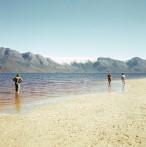
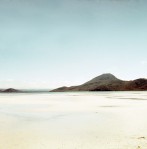
640 wide
480 high
640 wide
480 high
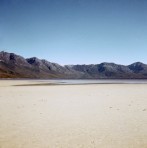
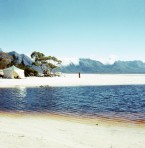
640 wide
480 high
640 wide
480 high
When we reflect on the beauty and dignity of Truganini
we must deplore the destruction of her people.
Let us then reflect on the beauty of this lake,
dedicate it to the memory of Truganini
and her people, and resolve to keep it
unspoiled for the benefit of mankind.

(Note the reference to "Pedder Pennies"; more about these shortly.)

but we will get back to you...


 Yeah, right...
Yeah, right... 
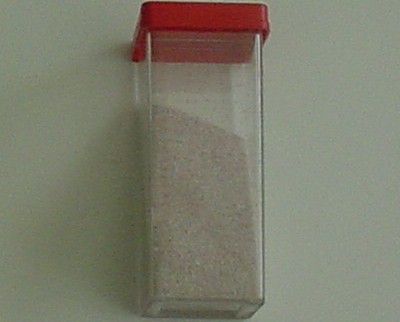
 )
)

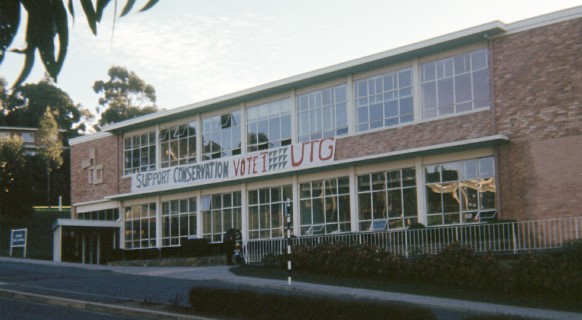


2,3,7,8 tetrachlorodibenzo-p-dioxin, C12H4Cl4O2 (TCDD)
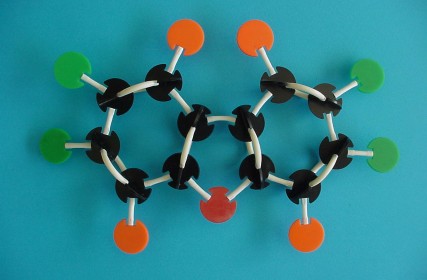
2,3,7,8 tetrachlorodibenzofuran, C12H4Cl4O (TCDF)

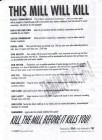
Two sides of the same broadsheet
(click on them to see bigger versions)
Thanks to TAP for permission to include these
 )
)


UPDATE, Thursday, 21st June 2007
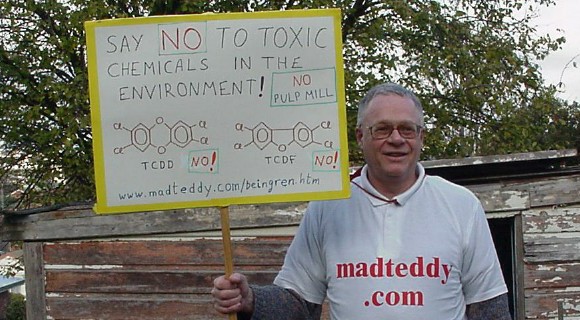
My son took this picture of me and my suitably nerdy placard when we
arrived home from the rally.

last tree has died
last river poisoned
last fish caught
will we realise
We cannot eat money


Launceston's Albert Hall. (The City Park takes up the remainder of the
large block behind the hall.)



Climate change: International Day of Action

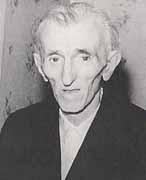 This photograph is probably the last one ever taken of Nikola Tesla
(1856-1943), the strange, brilliant scientist and inventor whose researches
paved the way for the very technology by which you are now viewing this
website.
This photograph is probably the last one ever taken of Nikola Tesla
(1856-1943), the strange, brilliant scientist and inventor whose researches
paved the way for the very technology by which you are now viewing this
website.
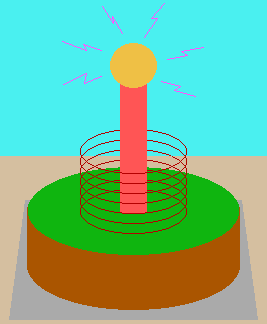


It's time for the nonsense to stop. There is no longer ANY EXCUSE.
90 per cent of the world's scientists agree that global warming is man-made.
============================================================


"the nature of climate change, and it reaffirms the need for
continued US leadership in addressing global climate issues".
"the nature of climate change, and it reaffirms the need for
continued US leadership in addressing global climate
issues".



 Return to Unequivocal ursine utterances menu
Return to Unequivocal ursine utterances menu

